On July 18th – 22nd, 2022, Memory crew travelled to Hua Tat village, Van Ho district, Son La province, Vietnam, to execute the next step of the MEMORY Project – Valorisation. The crew included participants from Action Synergy – Greece, Academy of Fine Arts in Naples, Restoring Ancient Stabie (RAS)- Italy, and Center for Sustainable Development Studies (CSDS) – Vietnam. Unfortunately, Peruvian participants from ASONEDU could not join due to several technical reasons. Among them, CSDS was pleased to be the host.

During five days of the seminar, the Memory team had an opportunity to immerse themselves in various identified local memories including Paper-making and Wife-catching, two of the most important traditions of H’Mong people; and in order for the participants to get a deep and authentic sense of the memories, a number of lively and creative valorising strategies were used.
The Memory journey
Day 1: Village tour
After a few hours travelling from Hanoi, Memory team arrived at Hua Tat village around noon, settled down at A Chu’s Homestay, the pioneering homestay in the village’s community tourism, had lunch with exquisite local cuisine, rested and prepared for the village tour.

The tour around the village was led by a local. Through his guide, we learnt about the field where H’Mong people farm, what kind of vegetables were grown there, and that it had been an opium poppy field before modernisation. On the way, we walked pass by a seemingly abandoned field with several big wood pillars and later found out that they were the remaining of a burial ceremony.
We also had a chance to set foot in a traditional house of the H’Mong people, learnt about the structure of the house, related traditions and ceremonies that every household carries out through out a year, such as pillar worshiping or entrance door worshiping.
At the top end of our tour, we came to a blacksmith’s smithy, where sharp knives of H’Mong people were forged at the end of the year.
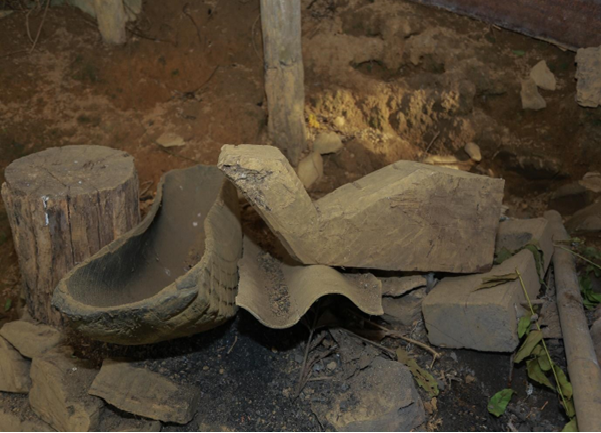
As we were on the way back, thinking the tour was over, we stopped by another local’s house where we were offered jackfruit. The host, or we thought they were, were very friendly and open, sharing all kind of stories. That is when we discovered the love story of the two young love birds; one was a young local man, and the other flew from HCM City to be with her man for a few weeks. Inviting them into our project was what we could not ignore, and it made them very happy to be welcomed. We were all pleased that it ended our village tour on a heart-warming note, a loving memory.

Day 2: Paper-making
On the second day, we had a brief morning meeting to discuss the schedule and divide ourselves into smaller groups working with the same subject but different approaches. The identified memory we worked on was Paper-making tradition of the H’Mong people, and the strategy each group used to valorise the memory is film, landmark, urban art, or senses.
Next, we moved to the house of Trang A Cua, the teacher for our workshop, to learn about Paper-making. He introduced us with H’Mong’s bamboo paper, related traditions, making process, usage, and showed us some products made from the paper.
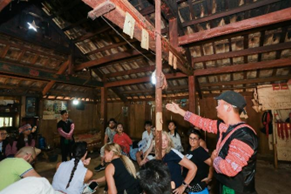
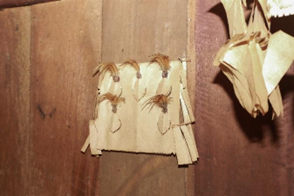
Paper making is a handicraft that has been passed down generation after generation in Hua Tat. The papers here are made for domestic and cultural purposes which you can’t find anywhere else. And by any means, the process of Hmong paper making is absolutely meticulous. The process of paper generally involves 4 main steps: collecting, stewing, soaking and drying, adding up to the whole month to complete the process. It is usually done once a year between July and August.
We then got hands-on experience by doing some small steps in the process, such as chopping and splitting bamboo, squashing and filtering bamboo pulp, designing and spreading refined bamboo pulp, and peeling out finished product. Everyone was intrigued and excited to get involved in making beautiful bamboo paper.
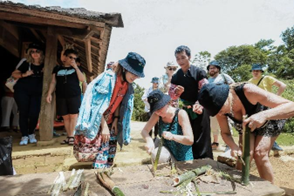
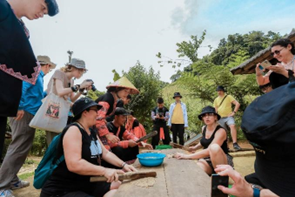
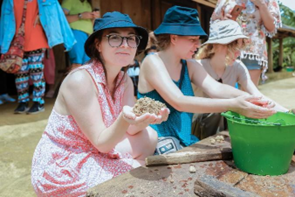
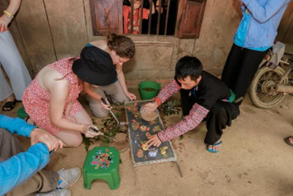
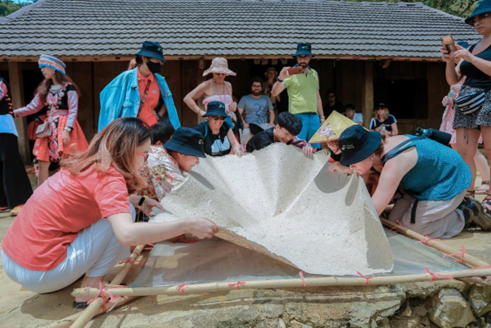
Peeling final product
After obtaining the knowledge of Paper-making, in the afternoon, each group worked on their own to valorise the memory by using the assigned strategy. Everybody was engrossed in the mini project, making detailed planned on how to use art or senses, build landmark, or even creating a documentary to give value to the memory. The groups then presented their ideas and products and received questions or feedback from other groups to better valorise the memory.
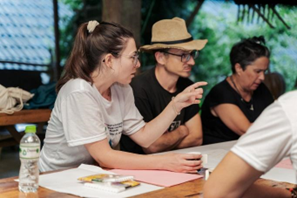
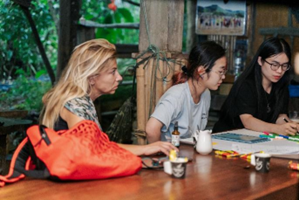
Day 3: Wife-catching
The schedule for the third day was somewhat similar to the previous one, first-hand experiencing the memory, then valorising it, with the memory being Wife-catching tradition of H’Mong people.
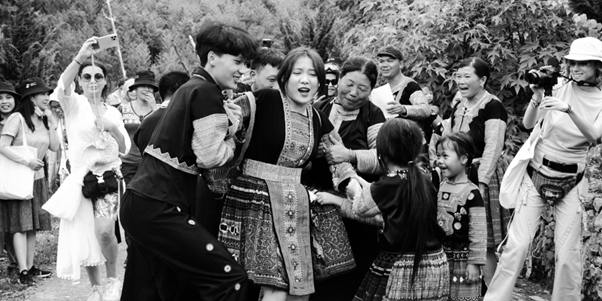
The custom of Wife-catching is a unique cultural feature in the marriage of the H’Mong people. The custom of “capturing a wife” can also take place for many reasons, for example, the boy likes the girl but not the other way around; however, these cases only happened in the past, under the feudal society. About 5-6 years ago, the custom of catching a wife has gradually disappeared because young people can get to know each other via Internet; only few of them keep that activity going.
The golden time to “steal” or “capture” a girl is when she goes out, feeds the pigs, etc. or when there is no one else at home. If the girl is captured, she has to stay at the boy’s house for 3 days, then a member of the boy’s family would go back to the girl’s house to ask for marriage. If she doesn’t give her consent to marry the person who captured her, however, then after 3 days, it would be fine for the girl to get married with another because she is not discriminated against by the community.
With the notion that the girl does not actively follow the boy, people believe that when there is a dispute, the girl would have a reason as “I didn’t follow you, I was captured”. Young people often invite friends to join them in catching their lovers. When the girl’s family try to save the girl, the boy’s friends rush to block the blow so that the boy can bring the girl home.
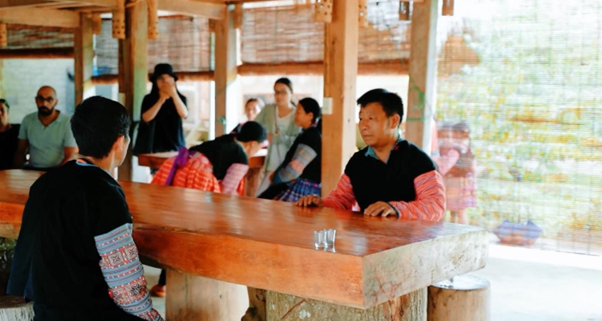
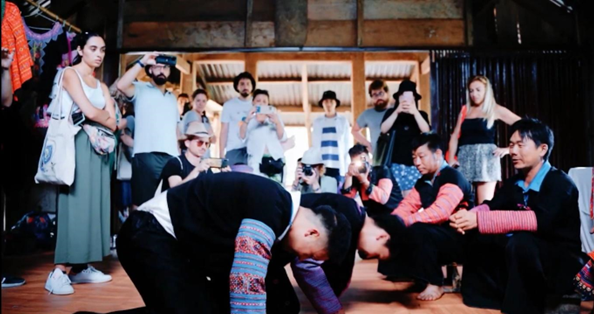
Since the tradition has now been ceased to be practiced, we learnt about the tradition through a play, with the characters played by the local themselves – the boy, the girl, their families. Each act was well recreated, following the boy and girl to the scenes where it usually had happened in the past. The dialog between the two lovers agreeing on practicing the tradition before marriage, the capturing scene where the girl worked, the resistance the boy met when the girl’s family found out she’s being captured, the announcement from the boy’s uncle to the girl’s family; the agreement upon pre-marriage ceremony, and the acceptance the girl’s father give to the kneeling boy.
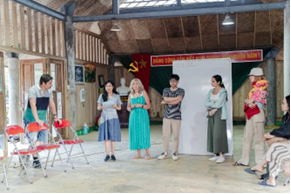
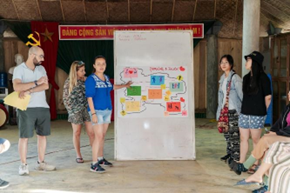
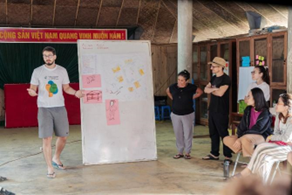
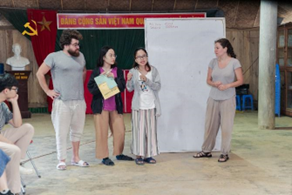
After that, we also had a discussion and Q&A session between the Memory team and the local to dig deeper into and unravel any confusion about the tradition. That is the liveliest way possible for the Memory team to fully understand the practice and better valorise the memory. Strategy assigned for each group for this memory was photo collage, podcast, comic, or treasure hunt, which, as amazing as they sounded, produced some wonderful results.
Day 4: Valorisation presentation + Festival
With all what we had done and learnt in the last two days, it’s time to work on the chosen 10 identified memories and valorising strategies from each country. Presentations from the three countries were as lively as they got, unique and typical. From the feedback we received from each other, we all need changes and improvements. Generally, narrowing down what we got so far, and concrete methods, strategies and results are necessary to better valorise the memories. Next plans were also made, and we all agreed that from this meeting to before the final meeting, there are much to work on. But when we try our best, it shouldn’t be too difficult.
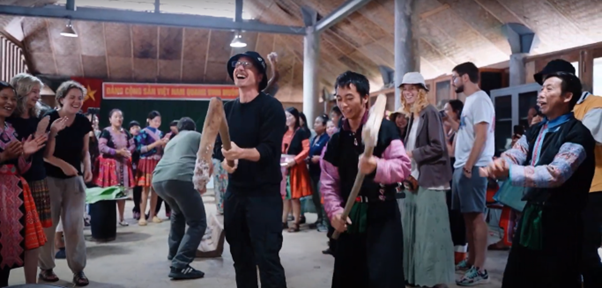
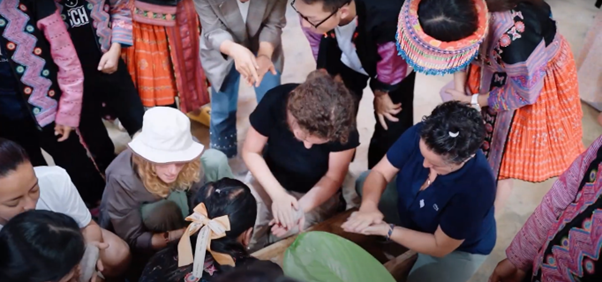
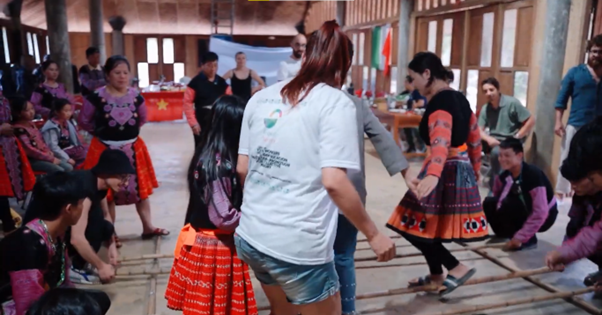
In the afternoon, what we’d been all waited for finally came, the festival, cultural exchanging, among the three countries. We all brought our countries’ most featured sweets and drinks to offer our beloved friends, our famous dances so we could dance together, and fun games that everyone eagerly joined. On top of that, we contributed a little effort in making a special local dish “bánh dày mông”, squashing cooked sticky rice, which we later had at dinner. It is also impossible not to mention the beautiful performance from the love birds that made us all feel so loved.
Day 5: Hoa Lo prison
Travelling back to Hanoi, we already felt nostalgic and missing Hua Tat. But everything comes to an end, and we will always treasure the memory we had and created in Hua Tat. In Hanoi, we had a trip to Hoa Lo prison, a relic which is used to be “Hell on Earth”, “School for patriots”, “Hanoi Hilton hotel”. We learnt more about a part of Vietnamese history there and came to appreciate all what the previous generations had sacrificed for their country.
“From the end of 19th century, the French colonialists strongly suppressed the fighting movements of the Vietnamese people. They set the court systems, recruited more policemen and built many more prisons to service their ruling administration in Viet Nam. In 1896, the French built Hoa Lo prison on the land, which was a famous pottery village – Phu Khanh Village, Vinh Xuong, Tho Xuong District in Ha Noi. Hoa Lo was one of the biggest prisons built by the French in Indochina.” (Hoa Lo Prison, 2022)
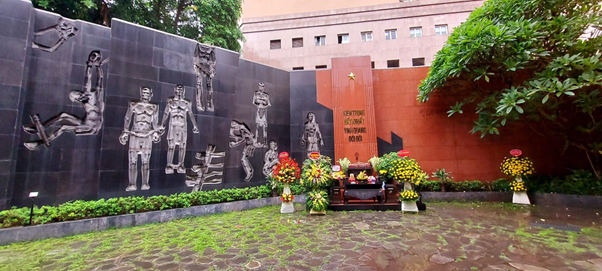
The stay
Beside the well-planned schedule that the organisers prepared, we were all very thankful that our stay had been comfortable and well-taken-care-of too.
Accomodation
Homestay A Chu is a beautiful house in the Northwest mountains of Mr. Trang A Chu, a son of the H’Mong people. The homestay is located in the heart of the valley surrounded by stone fences and lush green trees, designed in a cozy and traditionally ethnic style showing the culture and traditions of the indigenous H’Mong people. All materials are from nature such as bamboo, wooden trunks, etc., creating a feeling of peace. In particular, the intricate traditional decorations are sewn by the homestay owner’s wife herself. We are confident to say we were happy to stay in such an amazing homestay.
Cuisine
Staying at the homestay, we got to enjoy the delicious specialties of the Northwest. Here, we were also “taken care of” by the host from sleep to meal; every morning when we woke up, there was always a buffet with a lot of delicious typical local food prepared. The same adjectives can be used for lunch and dinner. After working enthusiastically on the project, a full stomach with tasty food made us all very pleased.
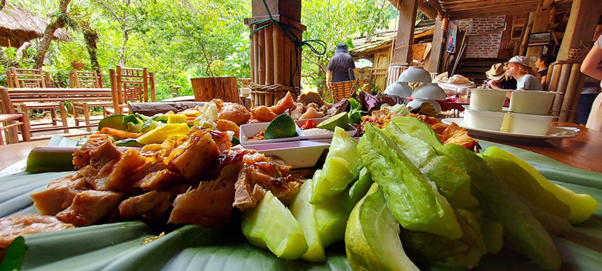
Work hard, play hard
Yes, we work hard, and we play hard too. From mini games as energisers to start the day to jolly and carefree karaoke night, we all zealously participated. These were the time that we got the energy to work.
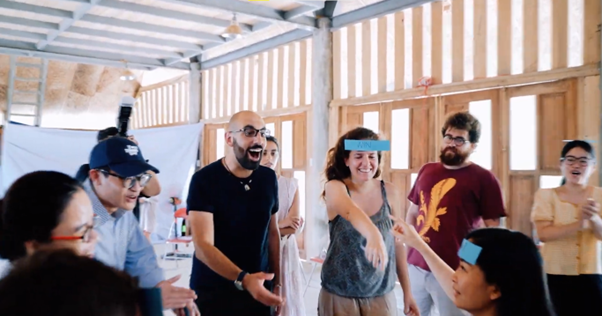
The sentiment
With all that being said, we are very happy that this Memory journey has indeed created some great memory and left quite an impression on the Memory team. Anastasia from Greece said that it was “an inclusive and amazing international memory meeting”; and for Antonio from Italy, it was “a week full of emotions, learning and good times”. While “mosquito” had been a little pain that most people would like to change, what they would love to keep are all the beautiful friendships and wonderful memories.
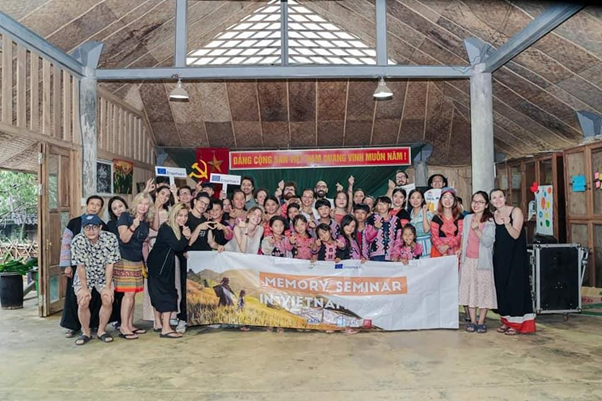
Memories have been well-identified. Promise is there to valorise and promote those wonderful memories!
